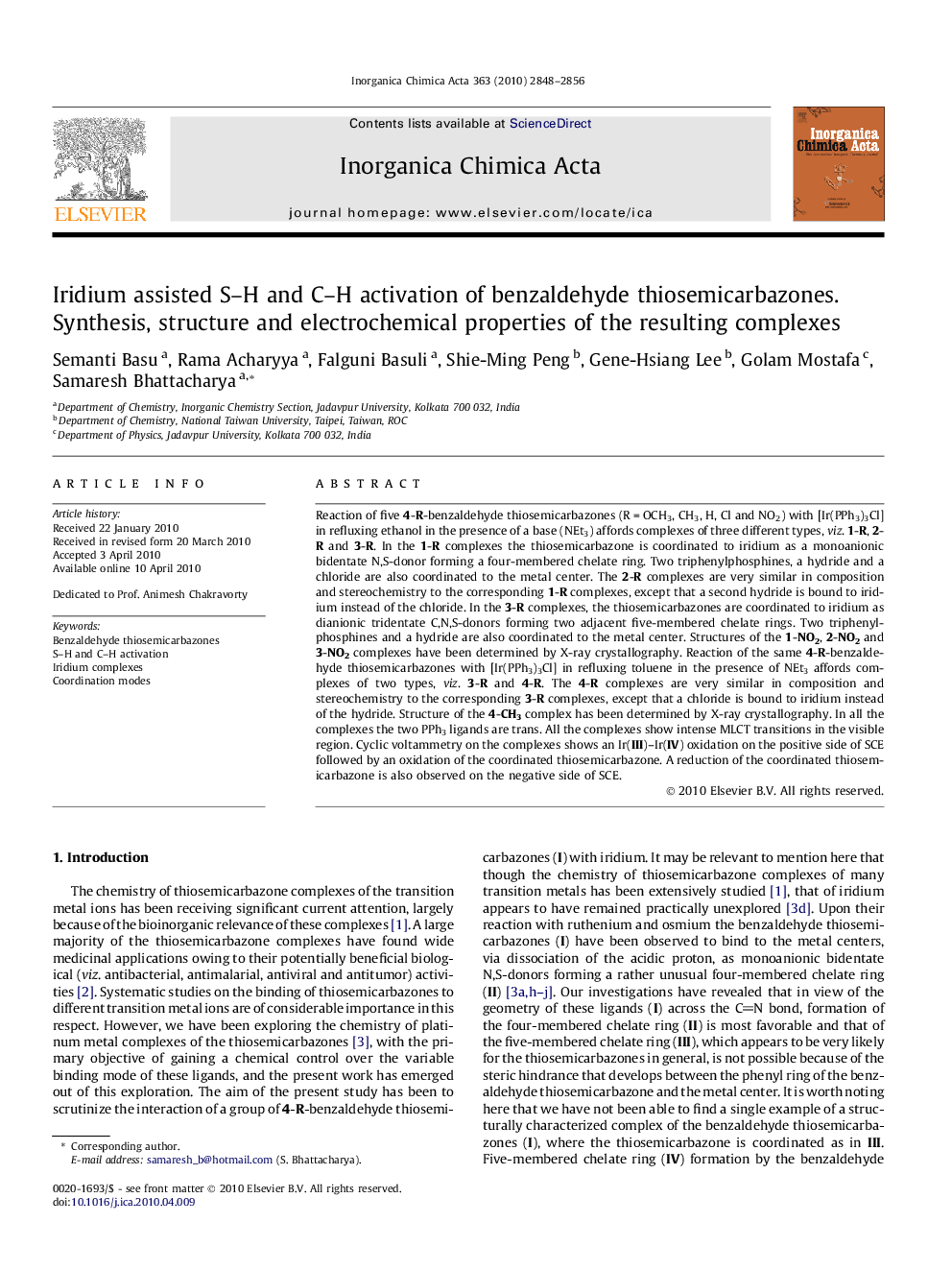| Article ID | Journal | Published Year | Pages | File Type |
|---|---|---|---|---|
| 1306896 | Inorganica Chimica Acta | 2010 | 9 Pages |
Reaction of five 4-R-benzaldehyde thiosemicarbazones (R = OCH3, CH3, H, Cl and NO2) with [Ir(PPh3)3Cl] in refluxing ethanol in the presence of a base (NEt3) affords complexes of three different types, viz. 1-R, 2-R and 3-R. In the 1-R complexes the thiosemicarbazone is coordinated to iridium as a monoanionic bidentate N,S-donor forming a four-membered chelate ring. Two triphenylphosphines, a hydride and a chloride are also coordinated to the metal center. The 2-R complexes are very similar in composition and stereochemistry to the corresponding 1-R complexes, except that a second hydride is bound to iridium instead of the chloride. In the 3-R complexes, the thiosemicarbazones are coordinated to iridium as dianionic tridentate C,N,S-donors forming two adjacent five-membered chelate rings. Two triphenylphosphines and a hydride are also coordinated to the metal center. Structures of the 1-NO2, 2-NO2 and 3-NO2 complexes have been determined by X-ray crystallography. Reaction of the same 4-R-benzaldehyde thiosemicarbazones with [Ir(PPh3)3Cl] in refluxing toluene in the presence of NEt3 affords complexes of two types, viz. 3-R and 4-R. The 4-R complexes are very similar in composition and stereochemistry to the corresponding 3-R complexes, except that a chloride is bound to iridium instead of the hydride. Structure of the 4-CH3 complex has been determined by X-ray crystallography. In all the complexes the two PPh3 ligands are trans. All the complexes show intense MLCT transitions in the visible region. Cyclic voltammetry on the complexes shows an Ir(III)–Ir(IV) oxidation on the positive side of SCE followed by an oxidation of the coordinated thiosemicarbazone. A reduction of the coordinated thiosemicarbazone is also observed on the negative side of SCE.
Graphical abstractReaction of benzaldehyde thiosemicarbazones with [Ir(PPh3)3Cl] in refluxing ethanol in the presence of a base (NEt3) affords complexes of three different types, viz. 1-R, 2-R (via S–H bond activation) and 3-R (via both S–H and C–H bond activation). Similar reactions in refluxing toluene afford complexes of two types, viz. 3-R and 4-R.Figure optionsDownload full-size imageDownload as PowerPoint slide
